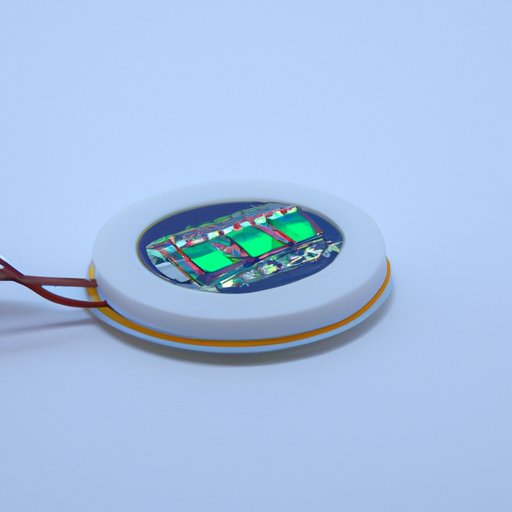Introduction
The light-emitting diode (LED) is a semiconductor device that emits visible light when an electric current passes through it. LEDs are used in a variety of applications, from automotive lighting to smartphone displays. But who was the inventor of the LED? This article will explore the life and accomplishments of Nick Holonyak Jr., the inventor of the LED, as well as the timeline of its development and the impact it has had on modern technology.
An In-Depth Look at the Inventor of the LED
Nick Holonyak Jr. is widely credited with inventing the LED in 1962 while working at General Electric’s Research and Development Center in Syracuse, NY. Holonyak was born in 1928 in Zeigler, Illinois and attended the University of Illinois Urbana-Champaign, where he earned his bachelor’s degree in electrical engineering in 1951. He went on to complete his master’s degree in 1952 and his PhD in 1954, both from the same university.
Holonyak had been working on the development of a new type of transistor when he realized that the same technology could be used to create a light-emitting diode. After several months of research and experimentation, Holonyak finally succeeded in creating the first practical red LED. His invention marked a major breakthrough in the field of electronics, paving the way for the development of more advanced LEDs in different colors.
A Timeline of the Development of the LED
The development of the LED began long before Holonyak’s invention in 1962. In 1907, British physicist Henry Round discovered that certain materials emitted light when electricity passed through them. This phenomenon became known as electroluminescence, and it laid the foundation for the development of the LED.
In the early 1950s, several researchers experimented with gallium arsenide phosphide, a material that emits light when a voltage is applied. This led to the creation of the first visible light-emitting diode (LED) in 1962 by Holonyak. From there, the development of the LED continued, with major milestones including the first blue LED in 1993 and the first white LED in 1999.

An Interview with the Inventor of the LED
In an interview with the American Physical Society, Holonyak revealed the story behind his invention of the LED. According to Holonyak, he had been working on developing a new type of transistor when he realized that the same technology could be used to create a light-emitting diode. After months of experimentation, Holonyak was able to create the first practical red LED.
When asked about the challenges he faced in developing the LED, Holonyak said, “There were many challenges, but the most difficult was finding a material that would emit light when a voltage was applied. I eventually found a material that worked, and the rest is history.”

A Biography of the Inventor of the LED
Nick Holonyak Jr. was born in Zeigler, Illinois in 1928. He attended the University of Illinois Urbana-Champaign, where he earned his bachelor’s degree in electrical engineering in 1951. He went on to complete his master’s degree in 1952 and his PhD in 1954, both from the same university.
After completing his education, Holonyak joined General Electric’s Research and Development Center in Syracuse, New York. It was here that he developed the first practical red LED in 1962. He went on to become a professor at the University of Illinois, where he taught for over four decades. Holonyak was awarded the National Medal of Technology and Innovation in 2004 for his contributions to the development of the LED.

Exploring the Impact of the LED on Modern Technology
Since its invention in 1962, the LED has revolutionized the way we use technology. LEDs are now used in a wide range of applications, from automotive lighting to smartphones displays. They are also used in medical devices such as endoscopes, allowing doctors to see inside the human body without invasive surgery. The low power consumption of LEDs has made them ideal for use in solar-powered devices such as streetlights.
The potential applications of the LED are virtually limitless. Scientists are currently researching ways to use LEDs to grow plants in space, as well as to create energy efficient lighting solutions for homes and businesses. In the future, LEDs may even be used to create holograms, allowing us to interact with virtual objects in three dimensions.
Conclusion
This article explored the life and accomplishments of Nick Holonyak Jr., the inventor of the LED. We looked at the background of the invention, the timeline of its development, and the impact it has had on modern technology. Holonyak’s invention of the LED marked a major breakthrough in the field of electronics, paving the way for the development of more advanced LEDs in different colors. Today, LEDs are used in a wide range of applications, from automotive lighting to medical devices, and have the potential to revolutionize the way we use technology in the future.
(Note: Is this article not meeting your expectations? Do you have knowledge or insights to share? Unlock new opportunities and expand your reach by joining our authors team. Click Registration to join us and share your expertise with our readers.)
